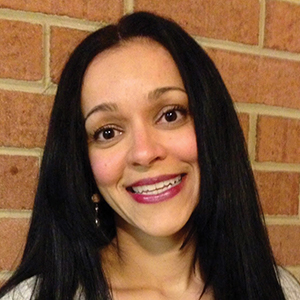A straight and twisting career path
When I was 8 years old, my mom gave me an encyclopedia of nature in four volumes titled Plants, Animals, Microorganisms, and Rocks and Minerals. After reading these books over and over, I began asking to go out into the field (the zoo, parks, the beach) to collect specimens and samples. I classified rocks according to their composition and texture, dissected pollination organs from flowers, and examined the anatomical differences between emu and rhea — applying my own version of the scientific method to my daytrips and excursions.
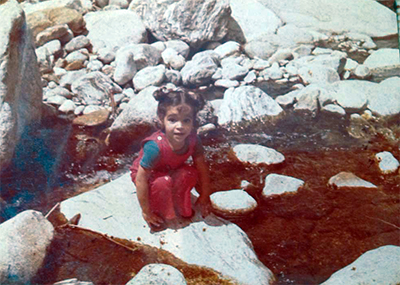 Budding scientist Quira Zeidan collects rock in a river near her childhood home in Venezuela.
Courtesy of Quira Zeidan
Budding scientist Quira Zeidan collects rock in a river near her childhood home in Venezuela.
Courtesy of Quira Zeidan
Many of my close relatives worked in biology, engineering and medicine, and I grew up hearing them talk about science. My mother was an endocrinologist and animal rights advocate; her hobby was to rescue and rehabilitate injured stray dogs and cats to place later for adoption. I considered going to veterinary or medical school, but that interest ended the day my mother stopped by the roadside to offer medical assistance at the scene of a fatal car crash. I was only a teenager, so she told me to stay in the car and not look, but I peeked through the window for a few seconds and saw chaos: people crying, injured and bloody; paramedics and ambulances; and bodies being laid on the road. I was frozen and terrified. I then realized that remaining emotionally balanced in the face of sickness and death required a stoicism and psychological strength that I did not have.
After high school, I enrolled in an undergraduate biology program in my native Venezuela, intending to become a marine biologist, but I soon was captivated by the curriculum’s required class on molecules and cells. I was fascinated by the vast universe we cannot see with our bare eyes: thousands of microbes with sophisticated functions and forms, single-celled organisms that have been around for millions of years, proteins that acquire new functions with slight changes in their three-dimensional shape and especially the organized intracellular complexity of the cell, where tiny molecules work together to maintain life and allow movement./p>
I earned a B.S. in cell biology and started as a research scientist at the Institute of Tropical Medicine in Caracas. My research focused on characterizing the subcellular and biochemical alterations associated with heart and liver damage during chemotherapy with doxorubicin, a potent but toxic drug commonly used in the treatment of blood and solid tumors. I then was offered a research internship in a collaborator’s laboratory at the Johns Hopkins University School of Medicine to study the molecular mechanisms of protein synthesis reprogramming in mammalian cells exposed to heat stress.
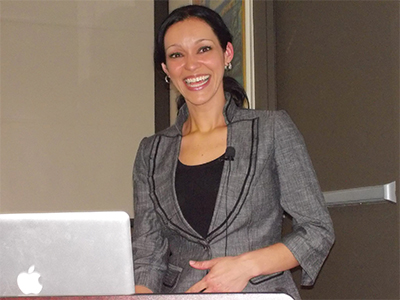 Quira Zeidan presents her Ph.D. thesis in 2012 at Johns Hopkins University.
Quira Zeidan presents her Ph.D. thesis in 2012 at Johns Hopkins University.
During this internship, I studied to become fluent in English and took all the standardized tests required to apply for graduate school in the U.S. I was accepted in the biological chemistry program at Hopkins and promptly began my thesis project investigating the chemical modification of ribosomes by sugar and its effects on translation and protein homeostasis.
While at Hopkins, I also became a mom, and suddenly the need for work-life balance took priority in my life. I earned a Ph.D. in biochemistry and went on to do a postdoctoral fellowship at the National Institutes of Health, studying the mechanisms of translation initiation regulation in yeast.
I continued on the traditional path to becoming an independent scientist, but I realized that I had changed as a person. My long hours alone in the laboratory repeating experiments now felt monotonous and isolating; I craved sociability and diverse activities. I had worked as a teaching assistant as an undergraduate and graduate student, and I enjoyed thinking about teaching methods and strategies I could use and the interactions with my students and other teachers. One day, I realized that I was spending more time reading about science education and less time thinking about technical issues in the lab. Teaching felt like a career that would allow me to remain connected to science while satisfying my need for human interaction.
I was working in the lab full-time as a postdoctoral fellow, but I also took evidence-based teaching and learning online courses, volunteered as journal club leader and poster judge, and mentored college students in summer enrichment programs. I completed pedagogy classes at a community college as part of an alternative teaching certification program for high school biology and chemistry teachers. I took a position as an adjunct professor of chemistry and anatomy and physiology for nursing students, and I participated in professional development activities for teachers. I learned how to manage a classroom, how to develop effective lesson plans, how to create meaningful assessments, how to deliver information in multiple ways, and how to generate a safe and inclusive environment for the exchange of science knowledge.
Because teaching was so rewarding, I started to do informal science outreach activities. I visited my son’s elementary school classroom on Career Day to demonstrate kid-friendly biology experiments, and I organized visits to a local anatomy museum for my students’ relatives and friends. I also volunteered at my institution’s education office to plan professional development activities for fellow postdocs and graduate students. All my nonlab activities pointed toward a career path as a science educator and communicator.
At the end of my postdoctoral project, I knew I had dedicated enough time to the lab, and I was eager to explore opportunities in other science-related fields. I was still teaching as an adjunct, and I considered teaching as a full-time career, but I was also open to working in associations and nonprofits — unfamiliar environments where I could apply my skills and learn new ones.
I found a perfect match in the position of education and public outreach coordinator at the American Society for Biochemistry and Molecular Biology. In this job, I use my teaching, communication and scientific abilities, while also learning about a new kind of scientific organization. I manage science education and outreach projects, supporting ongoing programs and helping develop new resources and materials. I represent the society at professional conferences and review grant applications. I engage with the public, society members and other organizations and work closely with other ASBMB departments. I am discovering that bench research and classroom teaching are not the only ways to contribute to scientific advancement.
By following the straight-line plan I conceived as a student and by making unexpected turns that resonated with my passions and emotional growth, I created the combination of experiences that led me here. In supporting the science community through the society’s efforts, I continue to grow and find fulfillment as a science professional leading a productive, balanced and accomplished life.
Enjoy reading ASBMB Today?
Become a member to receive the print edition monthly and the digital edition weekly.
Learn moreFeatured jobs
from the ASBMB career center
Get the latest from ASBMB Today
Enter your email address, and we’ll send you a weekly email with recent articles, interviews and more.
Latest in Opinions
Opinions highlights or most popular articles
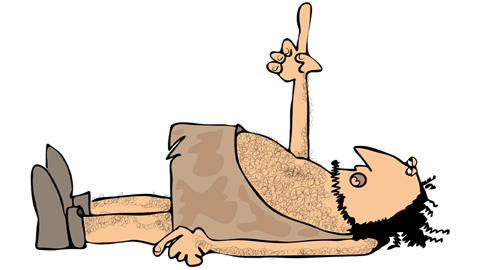
A paleolithic peer review
You might think review panels have only been around for the last century or so. You would be mistaken.

Early COVID-19 research is riddled with poor methods and low-quality results
The pandemic worsened, but didn’t create, this problem for science.

So, you went to a conference. Now what?
Once you return to normal lab life, how can you make use of everything you learned?
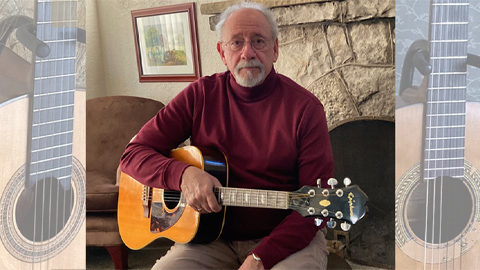
My guitar companion
A scientist takes a musical journey through time and around the world.
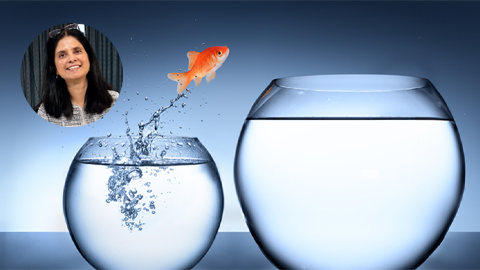
Catalyzing change and redefining purpose
To mark Women’s History Month, Sudha Sharma writes about her journey from focusing on her own research program to being part of a collaborative COVID-19 project.
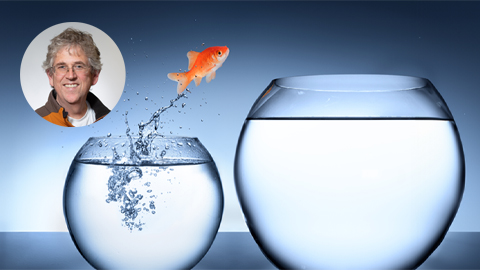
The power of sabbaticals
To mark Women’s History Month, Nicholas Rhind writes about learning techniques in other researchers’ labs that empower the work in his own.

